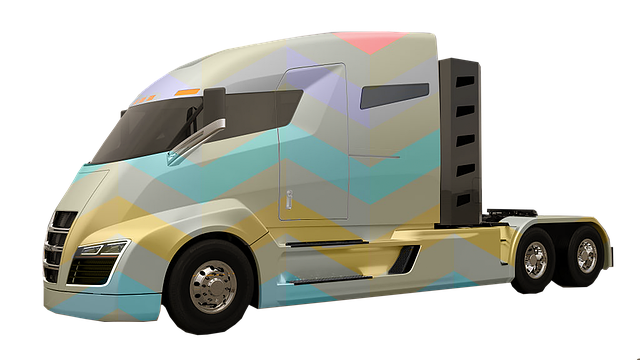Register Car: Step-by-Step California DMV VIN Verification Guide
Looking to register your car in California? This comprehensive guide walks you through every step, from understanding eligibility to securing your vehicle’s title. First, ensure your car meets Califor…….

Looking to register your car in California? This comprehensive guide walks you through every step, from understanding eligibility to securing your vehicle’s title. First, ensure your car meets California’s requirements. Next, gather essential documents, including proof of ownership and insurance. Then, master the DMV VIN verification process—a crucial step that involves cross-referencing your car’s unique identifier. After successful verification, submit your application, pay fees, and receive your vehicle’s registered title.
- Understand Eligibility for Car Registration in California
- Gather Required Documents for Vehicle Registration
- Perform DMV VIN Verification Step-by-Step
- Submit Application and Pay Fees for Car Registration
- Receive and Register Your Vehicle's Title
Understand Eligibility for Car Registration in California

Before you can register your car in California, it’s crucial to understand the eligibility requirements. One key step is ensuring your vehicle meets all safety and emissions standards set by the state. All vehicles, regardless of age or type, must pass a DMV (Department of Motor Vehicles) vin verification, which includes a comprehensive inspection to check for critical components like brakes, lights, and exhaust systems. This process verifies that your car is safe for California’s roads.
Additionally, you’ll need to have a valid vehicle registration from the state where you previously owned the car, proof of insurance, and a completed DMV form (often available online). For convenience, many Californians opt for a mobile vin inspection or mobile vin verification, allowing them to complete these steps without visiting a DMV office. This streamlined approach ensures that you meet all registration requirements efficiently.
Gather Required Documents for Vehicle Registration

Before you start the registration process, ensure you have all the necessary documents. The California Department of Motor Vehicles (DMV) requires a variety of paperwork to verify your vehicle’s information and your identity. Key among these is the Vehicle Identification Number (VIN) verification. This step is crucial and can be accomplished through a mobile vin inspection or by visiting a DMV office for a traditional vin inspection.
The required documents typically include proof of ownership, such as a bill of sale or previous registration, a valid driver’s license or state-issued ID card, and the completed Vehicle Registration Application form. It’s also important to have your vehicle’s make, model, year, and VIN at hand for accurate vin inspection. A clean and legible VIN is essential for successful DMV vin verification as it ensures that all details match the registered vehicle.
Perform DMV VIN Verification Step-by-Step

Performing a DMV VIN verification is a crucial step when registering your car in California. Here’s a simple, step-by-step guide to help you through the process. First, gather all necessary documents, including your vehicle’s registration certificate, proof of insurance, and identification. Then, visit the California Department of Motor Vehicles (DMV) website to ensure you meet all eligibility requirements for registering your car.
Next, locate a designated DMV office or consider a convenient mobile vin inspection service if time is limited. The inspector will verify the Vehicle Identification Number (VIN) by checking it against the manufacturer’s records to confirm vehicle identity and specifications. This process ensures that your car matches the documentation accurately, preventing fraud and ensuring safe roads for everyone. A reliable mobile vin verifier can provide this service conveniently at your location, making the registration process even smoother.
Submit Application and Pay Fees for Car Registration

After gathering all the required documents and ensuring your vehicle meets California’s standards, it’s time to submit your application for car registration. This process involves completing an application form available from the California Department of Motor Vehicles (DMV) or its online platform. Fill out the form accurately, providing detailed information about your vehicle, including its make, model, year, and unique Vehicle Identification Number (VIN).
Once your application is ready, submit it along with the necessary fees to the DMV. The fee structure varies depending on the type of vehicle and specific circumstances. You can pay these fees online or at a local DMV field office. As part of the registration process, you may also be required to undergo a DMV VIN verification, which ensures that your vehicle’s details match the records. Consider using a mobile vin verifier for this step, as it offers a convenient and often quicker alternative to traditional methods, allowing you to complete your car registration efficiently.
Receive and Register Your Vehicle's Title

Once you’ve completed the purchase of your vehicle, the next step in registering it in California is to receive and register your vehicle’s title. The title serves as proof of ownership, so it’s crucial to ensure its authenticity before proceeding with registration. This involves a process known as DMV VIN verification, where you’ll need to validate the Vehicle Identification Number (VIN) through the California Department of Motor Vehicles (DMV).
Using a mobile vin verifier or undergoing a mobile vin inspection is an efficient way to handle this step. These services allow you to verify the VIN online or over the phone, checking against the DMV’s records to confirm the vehicle’s history and ensure it meets all legal requirements. Once your title is verified, you can proceed with submitting the necessary paperwork for registration at your local DMV office.
Registering a car in California involves several straightforward steps, from confirming your vehicle’s eligibility to submitting the necessary paperwork. By gathering all required documents, completing the DMV VIN verification process, and paying the appropriate fees, you can ensure a smooth registration experience. Remember to keep your vehicle’s title secure after receiving it, as this document is essential for future transactions and proof of ownership. With these simple steps, you’ll be on your way to legal and secure car ownership in California.







